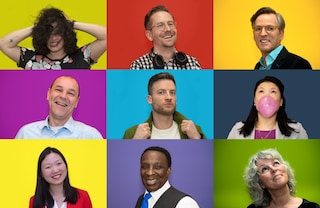
Our people
Mina: “In 2020, we looked to introduce a new range of functionalities to our coatings by setting up the Surface Activation group within our Global Innovation Team. We all worked together to set the boundaries and define the areas we’re working on. We had to convince many people along the way that this transformational group is a necessity.
“As the group lead and principal researcher – together with a diverse team from R&D, marketing and ISC – I looked into the major trends and drivers in the industry, proposed the focus area of surface activation by integration of technologies beyond chemistry, investigated research leads in this field and collaborated with experts from different fields.
“Doing so, we’ve managed to turn our everyday surfaces into interactive and sensory surfaces.”
Mina: “Back in my childhood I was always a very curious one, always doing little experiments with different sorts of materials. I wanted to know how they behaved and how I could manipulate and change them for the better.
“I started as a petroleum engineer back in Iran, but it's a very male dominated atmosphere and that put me off a little bit. I decided to go back to my original interest, materials. After obtaining my Master’s on the material science of working with nanomaterials, I worked for a Research Institute on new technologies, mainly around coatings and paint. So I was already narrowing down towards my current career.
“Upon finalizing my PhD on self-healing coatings at TU Delft, I joined AkzoNobel as a researcher. While I moved into Marketing for a time, working as a product/portfolio manager, I was thrilled to make a return to R&D as Senior Researcher, leading the Surface Activation team.”
The UN General Assembly adopted February 11 as the International Day of Women and Girls in Science to promote the full and equal access and participation of women in science, technology, engineering and mathematics, otherwise known as the STEM fields.
According to the UN, though women have made a lot of progress in these disciplines, they still face a significant gender gap at all levels. Women often:
Mina: “In only a couple of years, my research groups have managed to embed on/off switches and sensors into coated surfaces. That enables the digitalization of surfaces and their connectivity to an ever-growing web of smart networks.
“This would not only ensure that key infrastructural components are well protected, but that they’re also acting as sensors – collecting and transmitting useful performance-related data. That functionality enables predictive maintenance and ultimately prolongs the service life of the protective coatings and the infrastructures they’re applied on.”
Mina: “To be a woman in science is both interesting and challenging, to say the least. I came from Iran, and if you look at the statistics there are many female graduates, but when it comes to the research grants you can get or the recognition and acknowledgement from your male colleagues, it’s not at the level it should be. And even when I came to the Netherlands to do my PhD, women made up probably less than 10% of the professors. That says something to you: that you still have to work harder to prove your case and get the same opportunities.
“We’ve made a lot of progress, as women. And also as a company – at AkzoNobel, we have women on our Executive Committee and a target of 30% female executives by 2025, and that’s showing what can be achieved at the highest level. It’s inspiring to feel there’s room to grow, but of course there’s still work to do to bring the balance to where it should be at all levels of the organization, including where I am.”
“Just go for it,” Mina says. “Looking around me at our site in Sassenheim in the Netherlands, I have so many colleagues who show a career in R&D is not only possible, but extremely fulfilling. AkzoNobel has a global footprint and it’s a really great place to get your start. The first step is always the hardest, but I’ve found it just begins to flow from there.”


